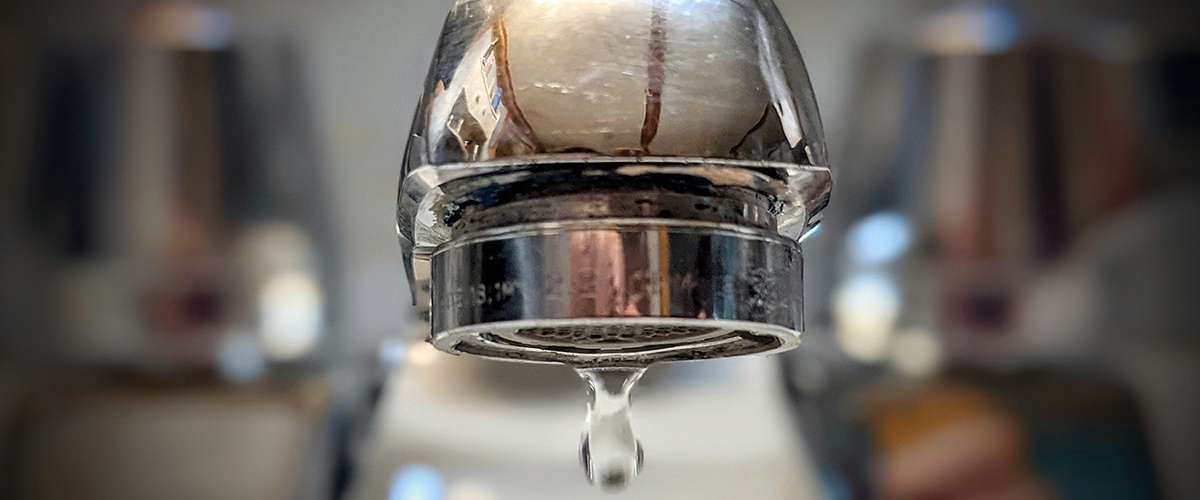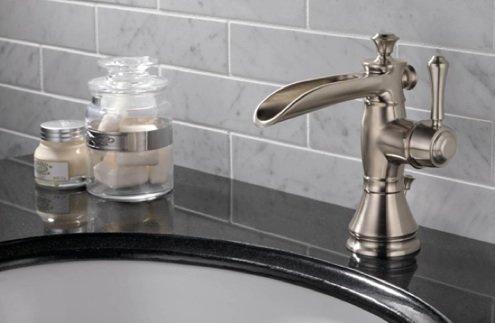They are making a few great pointers regarding Why Are My Faucets Dripping (And Can I Fix It Myself)? as a whole in the content down the page.

Trickling taps may seem like a small aggravation, however their effect surpasses just the nuisance of the sound. From wasting water to incurring unnecessary financial prices and health dangers, disregarding a leaking tap can result in different repercussions. In this write-up, we'll delve into why it's important to resolve this typical house issue without delay and successfully.
Wastefulness of Water
Environmental Impact
Leaking taps add considerably to water wastefulness. According to the Environmental Protection Agency (EPA), a single faucet dripping at one drip per secondly can lose greater than 3,000 gallons of water annually. This not only stress water sources but likewise affects environments and wildlife based on them.
Financial Prices
Enhanced Water Costs
Beyond the environmental effect, leaking taps can pump up water bills significantly. The built up wastefulness in time converts right into greater utility costs, which might have been prevented with prompt repair work.
Prospective Home Damage
Moreover, long term trickling can bring about damage to components and surface areas surrounding the faucet. Water build-up can create staining, rust, and even structural problems if left neglected, causing additional repair prices.
Health Problems
Mold And Mildew and Mold Growth
The continuous existence of wetness from a leaking faucet produces a perfect atmosphere for mold and mold development. These fungi not just jeopardize indoor air quality yet additionally position health risks, particularly for people with respiratory conditions or allergic reactions.
Waterborne Conditions
Stationary water in trickling faucets can become a breeding ground for microorganisms and other pathogens, enhancing the threat of waterborne conditions. Contaminants such as Legionella microorganisms prosper in stationary water, potentially bring about serious ailments when ingested or breathed in.
Do it yourself vs. Expert Repair service
Benefits and drawbacks of DIY Repair Work
While some might attempt to deal with a trickling tap themselves, do it yourself repair services come with their own collection of challenges. Without correct understanding and devices, DIY attempts can intensify the problem or cause insufficient repair services, prolonging the trouble.
Benefits of Hiring a Professional Plumber
Hiring a professional plumber makes sure that the underlying root cause of the trickling faucet is dealt with properly. Plumbers have the knowledge and equipment to detect and repair tap concerns successfully, saving time and decreasing the danger of additional damage.
Step-by-Step Overview to Taking Care Of a Dripping Tap
Devices Needed
Prior to attempting to deal with a leaking faucet, collect the required tools, including a flexible wrench, screwdrivers, replacement parts (such as washing machines or cartridges), and plumber's tape.
Usual Faucet Issues and Their Solutions
Determine the sort of tap and the specific concern triggering the drip. Typical troubles consist of worn-out washers, corroded shutoff seats, or defective O-rings. Describe manufacturer guidelines or online tutorials for detailed assistance on fixings.
Preventive Measures
Routine Maintenance Tips
To prevent leaking taps, carry out regular upkeep such as cleansing aerators, evaluating for leakages, and changing damaged parts quickly. Additionally, take into consideration mounting water-saving gadgets or updating to more effective components.
Value of Prompt Repair Works
Attending to dripping faucets as quickly as they're noticed protects against more water wastage and prospective damages, ultimately conserving both water and cash in the future.
Effect On Property Value
Assumption of Well-Maintained Residential Property
Keeping a residential property in good condition, including attending to maintenance concerns like dripping faucets, improves its regarded worth and charm amongst prospective buyers or lessees.
Impact on Resale Value
Residences with well-kept plumbing components, consisting of taps, command higher resale values in the realty market. Dealing with leaking taps can add to a positive impression during building assessments and arrangements.
Environmental Duty
Individual Contribution to Preservation
Taking duty for taking care of dripping faucets lines up with more comprehensive efforts towards water preservation and environmental sustainability. Every person's actions collectively make a substantial effect on protecting precious resources.
Lasting Living Practices
By focusing on timely repair work and taking on water-saving habits, individuals add to sustainable living practices that benefit both existing and future generations.
Final thought
Attending to a dripping faucet goes beyond mere benefit; it's an essential step towards saving water, lowering financial prices, and guarding health and wellness and building. Whether with do it yourself repair services or professional aid, doing something about it to repair trickling faucets is a little yet impactful means to advertise responsible stewardship of resources and contribute to a healthier, a lot more sustainable future.
How to Fix a Dripping or Leaky Faucet
A leaking faucet is one of the most common problems that homeowners encounter, but it being commonplace doesn’t make it any less annoying. The constant drip drip drip of a leaking bathtub faucet, showerhead, or sink tap can disturb your home’s serenity. Left neglected, a dripping faucet can also result in higher water bills and discoloration or mold growth in your sink or plumbing fixtures.
Fortunately, you don’t have to be a trained plumber to know how to stop a dripping faucet. With some basic tools, replacement parts, and a little patience, leaky faucet repair is a breeze. In this article, we’ll explain what causes dripping faucets and how you can fix them.
What Causes a Leaking Faucet?
Kitchen and bathroom faucets come in all manner of designs, but most involve some combination of valves, O-rings, seals, and washers. The O-ring is usually the weakest link, but any one of these pieces can wear down over time. Heat, moisture, temperature fluctuations, minerals, mold, and movement can contribute to warping and corrosion, breaking the watertight seal. This just comes with the territory of being a homeowner. Everything is always subject to wear and tear, and some component parts of your appliances and fixtures need to be replaced on occasion. At least replacement O-rings are cheap!
More rarely, dripping faucets can be a symptom of excessively high water pressure. Were this the case in your home, you would probably notice that the leak is not isolated to one faucet. Water pressure issues are harder to resolve on your own. We recommend contacting a professional plumber if you suspect your water pressure is too high.
How to Fix a Dripping Faucet
Pipe wrench or monkey wrench Allen wrench set Screwdrivers Old towel or rag Shut off the water.
Before you do anything, you need to turn off the water to keep from drenching your kitchen or bathroom. You should find a valve under the sink and against the wall. Once you’ve turned this valve, try turning the faucet on to confirm that the water source has been cut off.
If you can’t locate your local valve for the faucet you’re working on, you can always shut off the water to the house at the main valve. Of course, this will prohibit anyone from using the sinks, showers, or toilets while you’re working on the faucet that’s giving you trouble.
Plug or block the drain.
You’ll be disassembling the faucet and removing some small bits of hardware. Plug the drain with a stopper or rag to avoid the possibility of a small screw falling into your P-trap.
Take apart the faucet assembly.
There are several varieties of kitchen and bathroom faucets, each with its own manner of assembly. For detailed instructions on how to disassemble your faucet, you can refer to the fixture’s manual or contact the manufacturer. If you know whether you have a ball, disc, cartridge, or compression faucet, you can find detailed schematics online.
In general, you need to begin by removing the faucet handles. You might notice a small screw that you’ll need to remove with a screwdriver or Allen wrench. If you don’t see any visible securing hardware, it’s likely hidden under a decorative cap that can be unscrewed or popped off with flathead screwdriver.
Remove each piece methodically, consulting a schematic when necessary. Take notes or arrange the pieces in such a way to make it easier to correctly reassemble the faucet later.
Remove the cartridge.
Once you’ve removed the handles and securing hardware, you should be able to remove the valve cartridge or stem. Some cartridges will slide right out. Other faucet models will require you to loosen a nut with a pipe wrench before you can remove the valve stem.
Examine the exposed hardware.
With the cartridge or stem removed, inspect the component parts. Check the rubber O-rings for wear and tear. Also examine the seat washer for corrosion or other damage. These pieces are usually the responsible parties for a dripping faucet, but it’s worth inspecting the other component parts while you have the faucet disassembled.
Find replacement parts.
Once you’ve identified which faucet component has failed, find an identical replacement. Your local hardware store should have O-rings, seat washers, and other standard components in stock. If you have a luxury or uncommon faucet, you may have to contact the manufacturer for a replacement part.
It’s a good idea to take your old parts with you to the hardware store so you can compare them with the store’s inventory and be sure you’re purchasing the correct replacement.
Reassemble the faucet.
With your new parts in hand, reconstruct the faucet and handles. Don’t be tempted to overtighten screws or nuts. You might think this could create a better seal, but it can instead damage or bend a delicate part of the assembly and create a new problem for you.
Turn on the water and test the faucet.
The only thing left to do is test your work. Unplug the sink, turn the water back on, and try the faucet. Congratulate yourself on a job well done!
https://www.libertyhomeguard.com/how-to-fix-a-dripping-or-leaky-faucet/

As a reader about 4 Common Reasons for a Leaky Faucet, I assumed sharing that excerpt was important. For those who liked our blog entry kindly make sure you remember to share it. Thank you for going through it.